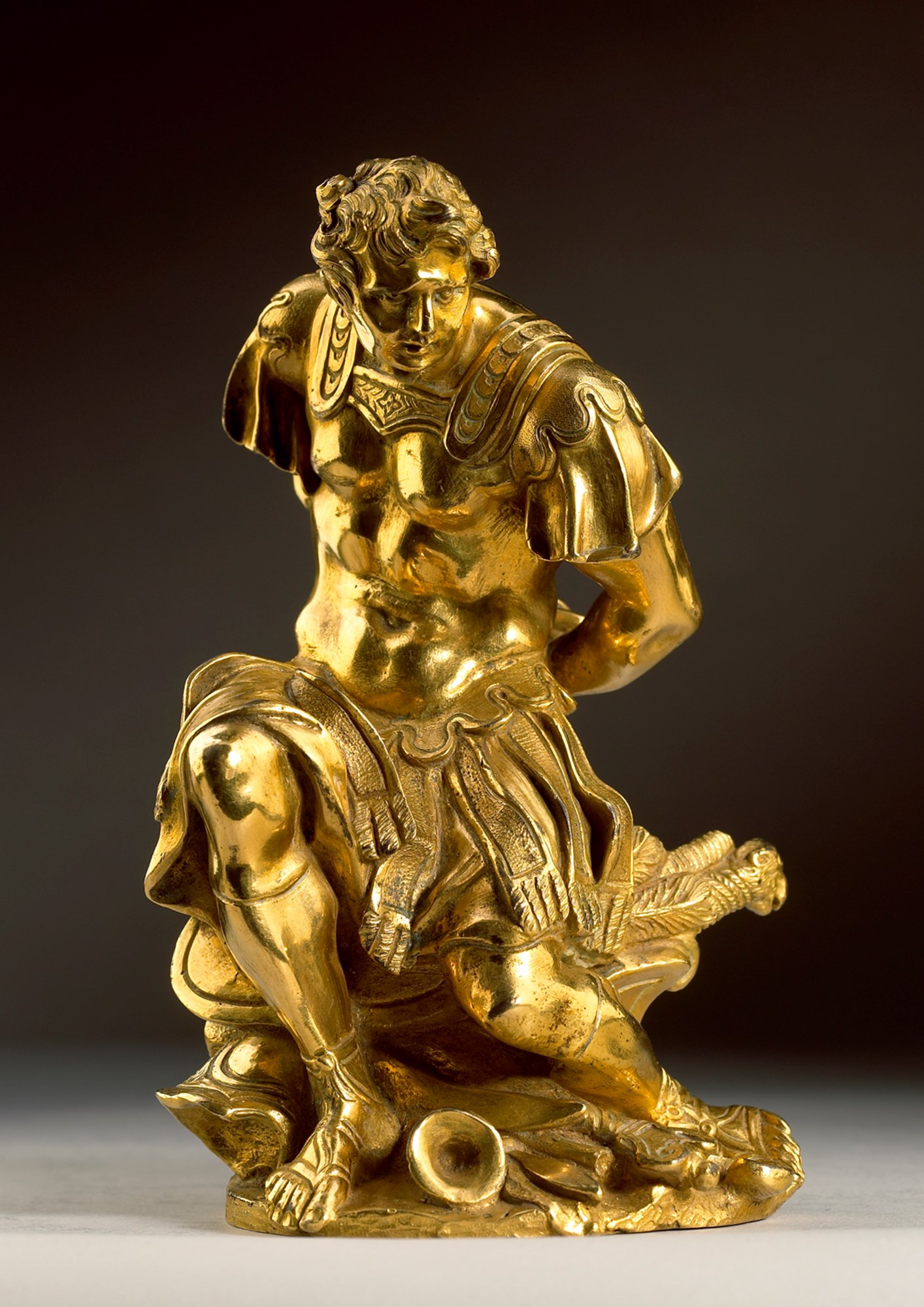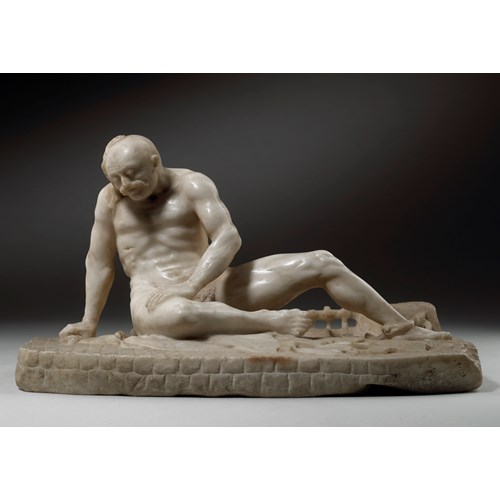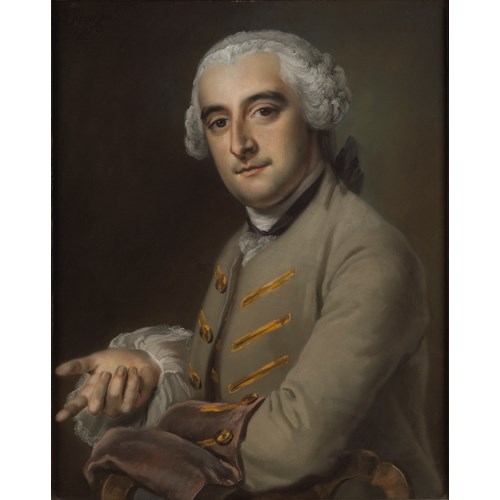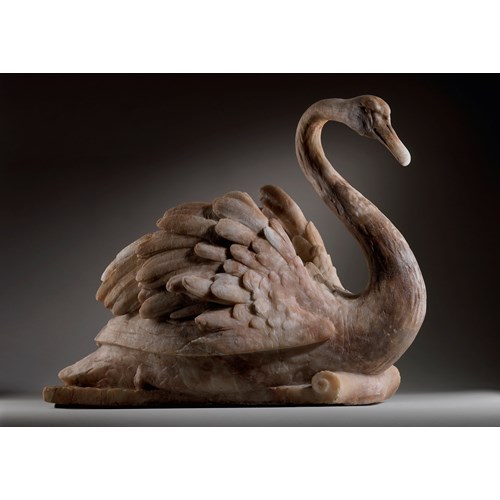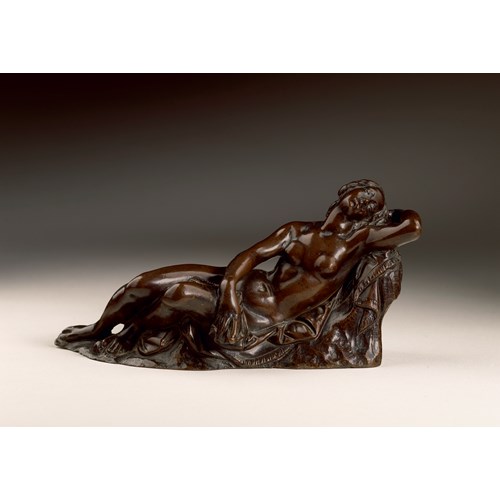Marketplace
7. Captured Warrior
7. Captured Warrior
Period Augsburg first half of 17th century
Medium Gilt bronze
Dimension 17 cm (6³/₄ inches)
This fine gilt bronze statuette is a new discovery and should be considered as one of the best works
by the Ciechanowiecki Master.
This anonymous artist takes his name from the legendary art dealer and connoisseur Andrew
Ciechanowiecki (1924-2015). The artist is also known as The Fitzwilliam Master, because some of
his works have been on a temporary loan to the museum in Cambridge.
The real identity of the Ciechanowiecki Master remains to be discovered. The present writer is
preparing the first accurate study of the artist, to be published in the catalogue of an exhibition
dedicated to Andrew Ciechanowiecki. Some of the bronzes in the group have been attributed to
Adriaen de Vries, others to Vittore Camelio, Charles Avery has suggested the name of the
Florentine goldsmith Manno di Sebastiano Sbarri, while Manfred Leithe-Jasper has pointed at the
world of Roman goldsmiths of the first half of the 17th century as the environment where the
Master could have worked.
Looking at the oeuvre of the artist, it seems clear that he was well-acquainted with the sculpture
of Giambologna and with Venetian early 16th century bronze sculpture. His taste for detailed
anatomy and highly finished surfaces points to Southern Germany, and especially Augsburg as the
seat of his activity, and one possible name is that of the silversmith and bronze founder David
Schwestermüller (1596–1678).
The small size of this bronze is another typical feature of the works by the Ciechanowiecki Master.
The young and athletic soldier is represented in his armour, his hands chained behind the back to
a tree stump. The pose has a clear inspiration from the antique, with some details recalling
celebrated Roman statues: for example, the sword of the warrior echoes that of the Ludovisi Ares.
This is the only cast known so far of this model. The links with other bronzes by the Master are
many and all immediately identifiable.
Within the catalogue of the Ciechanowiecki Master, there is a group of crouching or seated gilt
bronze statuettes. These show not just a composition similar to that of the Captured Warrior, but
a very similar cast and finishing.
by the Ciechanowiecki Master.
This anonymous artist takes his name from the legendary art dealer and connoisseur Andrew
Ciechanowiecki (1924-2015). The artist is also known as The Fitzwilliam Master, because some of
his works have been on a temporary loan to the museum in Cambridge.
The real identity of the Ciechanowiecki Master remains to be discovered. The present writer is
preparing the first accurate study of the artist, to be published in the catalogue of an exhibition
dedicated to Andrew Ciechanowiecki. Some of the bronzes in the group have been attributed to
Adriaen de Vries, others to Vittore Camelio, Charles Avery has suggested the name of the
Florentine goldsmith Manno di Sebastiano Sbarri, while Manfred Leithe-Jasper has pointed at the
world of Roman goldsmiths of the first half of the 17th century as the environment where the
Master could have worked.
Looking at the oeuvre of the artist, it seems clear that he was well-acquainted with the sculpture
of Giambologna and with Venetian early 16th century bronze sculpture. His taste for detailed
anatomy and highly finished surfaces points to Southern Germany, and especially Augsburg as the
seat of his activity, and one possible name is that of the silversmith and bronze founder David
Schwestermüller (1596–1678).
The small size of this bronze is another typical feature of the works by the Ciechanowiecki Master.
The young and athletic soldier is represented in his armour, his hands chained behind the back to
a tree stump. The pose has a clear inspiration from the antique, with some details recalling
celebrated Roman statues: for example, the sword of the warrior echoes that of the Ludovisi Ares.
This is the only cast known so far of this model. The links with other bronzes by the Master are
many and all immediately identifiable.
Within the catalogue of the Ciechanowiecki Master, there is a group of crouching or seated gilt
bronze statuettes. These show not just a composition similar to that of the Captured Warrior, but
a very similar cast and finishing.
Period: Augsburg first half of 17th century
Medium: Gilt bronze
Dimension: 17 cm (6³/₄ inches)
Provenance: Private collection, Belgium
More artworks from the Gallery


